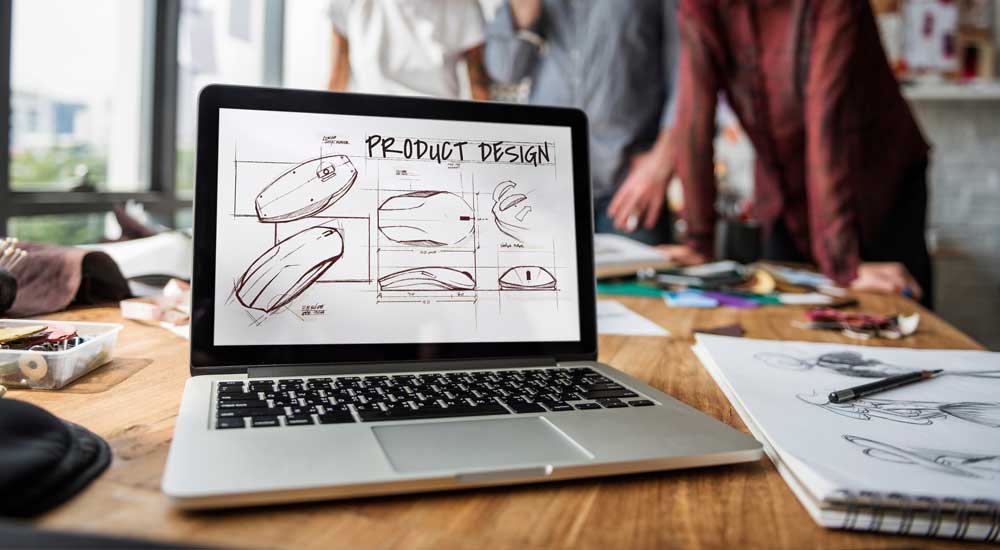How To Reduce Product Development Risks
Product development involves countless decisions that can immensely impact any project’s success or failure. Hence, reducing the risk associated with the development process is essential to ensure your product reaches its full potential.
Understanding and mitigating these risks early on can significantly increase your chances of success. Assessing every aspect of your product, from design to implementation, and using CAD conversion from Spatial is especially helpful in identifying issues quickly and preventing them from becoming significant problems in the future.
With careful planning and a willingness to adjust the production process as necessary, you can minimize product development risks while ensuring your products reach their highest potential. This article will explore the best strategies for reducing product development risks and achieving long-term success.
1. Retrace Your Steps
Taking a step back can help reduce product development risks. It allows you to take a more objective look at the project and identify potential issues before they become significant problems. This helps ensure that any changes or improvements are well thought out, eliminating unnecessary work and costly mistakes.
Before deciding how your team should move forward, thinking about what could go wrong is crucial. Ask yourself, ‘What if this feature doesn’t perform as expected?’ or ‘What happens if you don’t get enough customer feedback?’
Identifying possible obstacles in advance gives you time to plan and develop strategies to avoid them. Consequently, taking a step back also allows reassessing deadlines and resources needed to ensure everyone is still on the same page.
By considering all potential risks associated with developing a new product, teams can better prepare themselves for success.
2. Determine The Core Job-To-Be-Done
Identifying the core job-to-be-done (JTBD) is essential for reducing risk. The JTBD defines what customers need from a product or service to achieve their desired outcome. It helps organizations determine how best to design and develop products.
Generally, identifying the JTBD involves understanding customer behavior and motivations for using a particular product or service. This can be done by conducting market research, speaking with current and potential customers, and gathering feedback on existing products.
Consider these questions: Is this something they will use? Will they find it helpful? What do they need most out of a product like this? By understanding how people think and feel about a certain product, you can modify it accordingly and create something that meets their expectations.
With thoughtful planning and ongoing communication between stakeholders throughout the process, organizations can mitigate risks associated with product development while satisfying customer expectations.
3. Reach Out To Potential Customers
Interviews are an essential part of reducing product development risks. Reaching out to potential customers gives a team insight into their needs and desires. It helps them identify areas where the product can be improved or whether it should exist.
The best way to conduct customer interviews is by asking open-ended questions that allow the customer to provide detailed answers. This could include inquiries about what they want to see in the product, how user-friendly it should be, and any features they think need improvement.
Asking these types of questions will help determine the project’s viability before money and resources are invested. Taking time for these conversations can save a company from creating something that won’t meet its target market’s needs or expectations.
By speaking with those who may use the product, companies can get feedback while still in the early stages of development; this allows them to make changes quickly, if necessary, instead of investing more time and money into something that wouldn’t work out as planned.
4. Make A Simple Prototype
Creating a simple prototype is an effective way to reduce product development risks. It allows you to test ideas quickly and cheaply. You can use it to get customer feedback, identify potential problems, and develop the most appropriate solutions.
Prototypes can span various levels of complexity depending on the situation and desired outcome. A paper model may be enough to get started; however, if more hands-on testing is required, then a functional prototype should be built using readily available tools such as 3D printing or virtual reality software.
The prototype phase should also include all relevant features, including user interface design, performance testing, and usability testing.
By using prototypes early in the process, developers can identify issues before dedicating resources to developing a complete product version. This helps them make adjustments as needed without wasting time or money. Ultimately, this reduces risk by assisting teams to deliver successful products more efficiently and effectively.

5. Interview More Customers With The Prototype
When creating a prototype, the team makes assumptions about the customers’ needs and how they will use the product. However, these assumptions may not always be accurate, and the only way to validate them is by getting feedback from real customers.
By interviewing more customers after deploying the prototype, the team can get a better understanding of the customers’ needs and expectations, and make any necessary changes to the product to meet those needs.
Additionally, a product that is functional but not user-friendly is likely to have a high abandonment rate. By interviewing customers, the team can test the usability of the product and identify any areas that may be difficult for customers to use or understand.
However, it’s important to remember that customers don’t always give an honest evaluation. They may tell you something they think you want to hear instead of providing an accurate assessment. So, take time to ask more than one customer and get different perspectives on the value of your product. Doing so will help ensure that your efforts go towards creating something worthwhile for everyone involved.
Doing this regularly will help ensure that your product meets the needs of its users before it reaches the market, thus reducing risk down the line.
6. Modify And Put Your Prototype To The Test
Modifying and testing your prototype is an integral part of reducing risks associated with product development. You must ensure all potential problems are addressed before producing them on a much larger scale.
Start by reviewing the feedback you received from customers. This could include comments, suggestions, criticisms, and any issues or problems they encountered while using the product. Take note of any recurring themes or patterns in the feedback.
Once you have reviewed the feedback, prioritize the changes based on their impact and feasibility. Consider which changes are essential for improving the product and which ones can be addressed later. This may involve making changes to the user interface, adding or removing features, improving performance, or addressing any bugs or technical issues.
After making the changes, test the modified prototype to ensure that it functions correctly and that the changes have addressed the issues identified by customers. This will help you catch issues that may have yet to be apparent during the initial prototyping stages.
Testing the prototypes under real-world conditions, such as using user feedback or putting them through simulated scenarios with actual users, is also essential. You can test the prototype in-house or with a smaller group of customers before releasing it to a wider audience.
Once satisfied, you’re ready to release your product without fear of failure due to poor design or inadequate quality control procedures.
7. Release A Minimal Viable Product
Another alternative to reduce product development risks is to extract the minor version. This approach focuses on creating a minimal viable product (MVP) with only the most essential features and functions necessary for it to be marketable.
The most efficient way of doing this is to focus on a single feature or process at a time. You can test each part separately by breaking down complex ideas into components. This eliminates unknowns like compatibility issues between components, which could cause delays or extra costs in later stages of production.
Keeping the project scope narrow saves time and cost while providing something helpful to customers. Additionally, resources can be directed toward refining existing components rather than adding more complex ones.
By releasing an MVP quickly, companies gain insight into how their product works in real-world scenarios with actual users. Companies can then use this feedback to refine their products repeatedly instead of spending too much time developing all aspects simultaneously.
In doing so, they also have an opportunity to pivot if needed based on customer demands or changes within their industry landscape.
Conclusion
Regardless of the industry, product development entails risks. That’s why it’s essential to reduce them prior to mass production and ensure you’re creating something viable and valuable. Keeping these essential steps in mind when starting out can help you create successful products with less stress.
Retracing your steps and identifying the core job-to-be-done can help you focus on what customers really need from your product. Interviewing potential customers can give you insights into how they would use it and if there’s an existing demand for it.
Then, you can incorporate this information by creating a simple prototype and using it as another opportunity to interview more people about its value. Finally, once you have tested your prototype and received feedback, extract the possible minor version before launching or releasing your product.
Overall, this process may seem daunting at first, but taking proactive steps early on will save time and resources while ensuring you deliver something of value. Remember that developing anything new comes with risks, but following the above advice should help minimize those risks so that your product succeeds in meeting customer needs.

Recent Comments